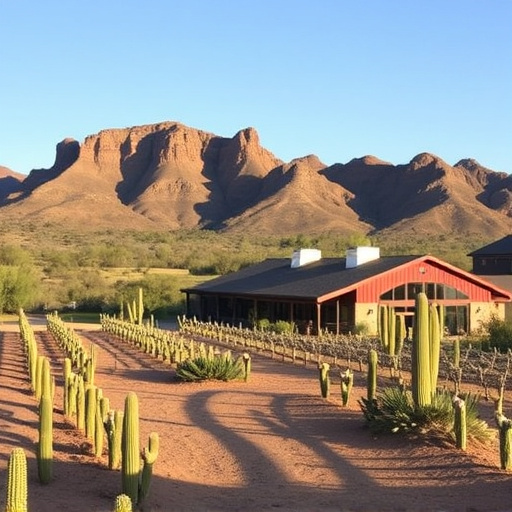Southern Arizona's diverse microclimates and terroirs foster a unique winemaking scene. From high-altitude valleys to warmer regions, various grape varieties thrive, resulting in a wide range of wine styles reflecting local conditions. Each southern Arizona winery offers distinct flavors influenced by climate, soil, and geography, making it a top destination for exploring terroir-driven wines.
Uncover the enchanting world of microclimates in southern Arizona and their profound impact on local wines. This region boasts diverse terroirs, each with unique temperature and humidity patterns, fostering distinct wine characteristics. From the cool highlands to the warm valleys, explore how these conditions influence varietal choices and create remarkable wine experiences at top southern Arizona wineries. Prepare to taste the terroir as we delve into the distinctive flavors that define this captivating wine destination.
- Exploring Terroir: Southern Arizona's Unique Microclimates
- Wine Varieties and Their Ideal Growing Conditions
- Case Studies: Top Wineries in Different Regions
- Tasting Notes: The Distinctive Flavors of Each Terroir
- How Climate Shapes the Wines of Southern Arizona
Exploring Terroir: Southern Arizona's Unique Microclimates
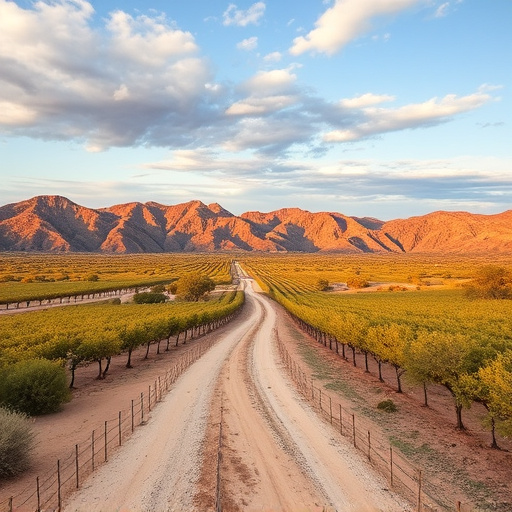
Southern Arizona, with its diverse landscapes and distinct microclimates, offers winemakers a canvas to paint unique terroirs. The state’s geography is characterized by towering mountains, expansive deserts, and lush valleys, each contributing to temperature variations that can differ by as much as 30 degrees Fahrenheit (17°C) in nearby regions. This natural diversity translates into a variety of microclimates, allowing for the cultivation of diverse grape varieties and the production of distinct wine styles.
For instance, the higher elevations of the Santa Catalina Mountains provide cooler temperatures and increased humidity, ideal for cultivating European grape varieties that thrive in similar climates. In contrast, the lower lying areas near the Mexico border experience hotter days and warmer nights, fostering the growth of heat-loving grapes like Tempranillo and Grenache. This range of microclimates ensures that southern Arizona wineries can produce wines with unique flavor profiles, from crisp and bright to rich and robust, showcasing the region’s terroir in every bottle.
Wine Varieties and Their Ideal Growing Conditions
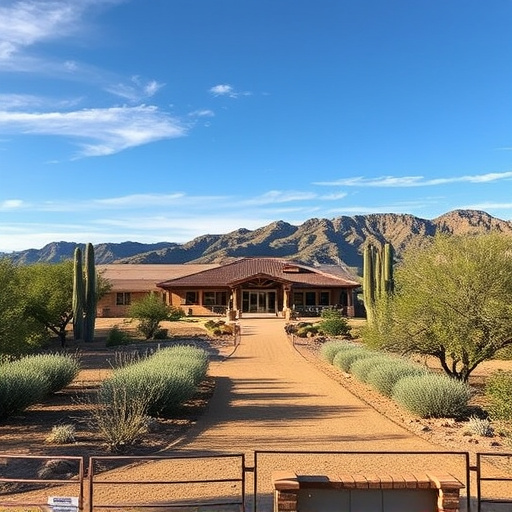
Wine varieties are carefully chosen based on their ideal growing conditions, which vary across different terroirs. In southern Arizona, winemakers have found success with a range of grapes that thrive in the region’s unique microclimates. For instance, French-originated varieties like Cabernet Sauvignon and Merlot do well in the cooler mountain areas, where evening chill helps slow ripening, resulting in fuller-bodied wines with complex flavors. On the other hand, hotter desert regions are better suited for heat-loving grapes such as Zinfandel and Grenache, which produce fruity, robust wines characteristic of southern Arizona’s terroir.
Each wine variety brings its own set of characteristics to the table, influenced by factors like sun exposure, soil composition, and wind patterns. This interplay between the grape and its environment creates distinct flavors and aromas that contribute to the region’s renowned microclimate-driven wines. Southern Arizona wineries have mastered the art of cultivating these varieties in their respective terroirs, showcasing the diversity and quality that can be achieved through careful consideration of both grape choice and local conditions.
Case Studies: Top Wineries in Different Regions
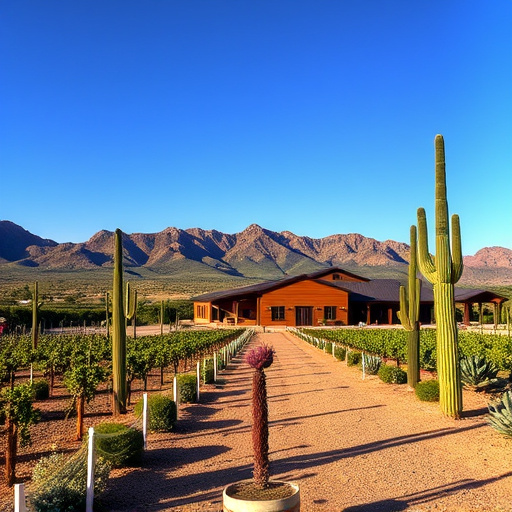
In southern Arizona, microclimates play a significant role in shaping the unique characteristics of wines produced across different terroirs. Case studies of top wineries in various regions highlight this diversity. For instance, the cool, high-altitude valleys of Santa Cruz and Sonoita produce lighter, more acidic wines with vibrant fruit flavors, while the warmer, lower-elevation areas near Tucson yield fuller-bodied reds with richer tannins. Each region benefits from distinct weather patterns, soil types, and vegetation, contributing to a varied and captivating wine experience for enthusiasts. Exploring these top wineries offers a sensory journey through southern Arizona’s diverse wine country, showcasing the terroir that makes each vintage truly special.
Tasting Notes: The Distinctive Flavors of Each Terroir

When exploring microclimate-driven wines from southern Arizona wineries, each terroir offers a unique sensory experience. Tasting notes often reveal distinctive flavors that reflect the specific climate and geography where the grapes were grown. For instance, wines from the Sonoran Desert might showcase rich, earthy tones with hints of spice, a result of the region’s scorching summer days and mineral-rich soils. In contrast, coastal terroirs near the Pacific Ocean can produce lighter, fresher wines with vibrant acidity and citrus notes, influenced by the cooling breezes and longer growing seasons.
Each southern Arizona terroir contributes its own signature to the wine, making for a captivating journey through diverse flavors. Winemakers carefully navigate these unique conditions, allowing the terroir to express itself in the final product. This results in a range of wines that delight palates, from robust reds with complex notes to crisp whites that dance on the tongue—all testament to the distinctive character of each vineyard location across this remarkable region.
How Climate Shapes the Wines of Southern Arizona
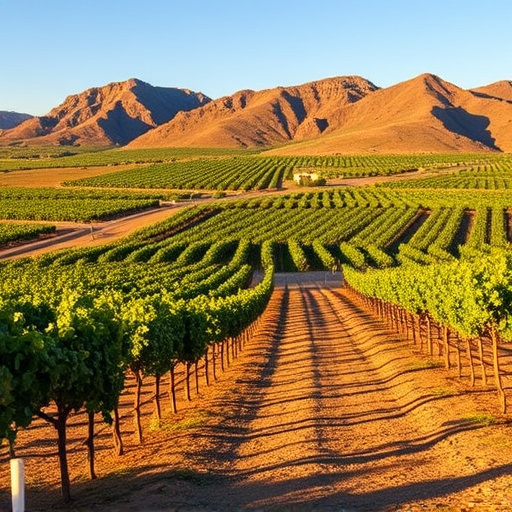
The wines of southern Arizona are a testament to how climate shapes the unique terroirs across this vibrant region. The state’s diverse microclimates, influenced by factors like altitude, topography, and geographical location, contribute to a wide range of grape varieties and wine styles. For instance, wineries nestled in higher elevations experience cooler temperatures, fostering the growth of grapes like Cabernet Sauvignon and Syrah that thrive in slightly chillier conditions. In contrast, lower-lying areas benefit from warmer days and sunnier skies, ideal for cultivating varietals such as Zinfandel and Grenache, known for their robust flavors and rich aromas.
Moreover, southern Arizona’s dry climate with occasional sporadic rainfall creates a challenging yet beneficial environment. The soil, often composed of sandy loam and granite, absorbs sunlight efficiently, contributing to the grapes’ intense ripening. This microclimate-driven process results in wines that showcase distinct characteristics—from the firm tannins and complex flavors of high-altitude vintages to the fruit-forward and full-bodied creations from warmer regions. Each winery in southern Arizona offers a unique interpretation of these terroirs, making the region a must-visit destination for wine enthusiasts exploring diverse climates and their impact on viticulture.
Southern Arizona’s diverse microclimates offer winemakers a unique canvas to craft distinctive terroirs, resulting in an array of captivating wines. By understanding the ideal growing conditions for various varieties and exploring the case studies of top local wineries, we can appreciate the nuanced flavors each region brings. The article highlights how climate shapes these southern Arizona wineries, providing a delightful journey through the state’s diverse wine landscapes. Whether you’re a connoisseur or curious beginner, discovering these terroirs opens a world of sensory delights and stories woven into every glass.
